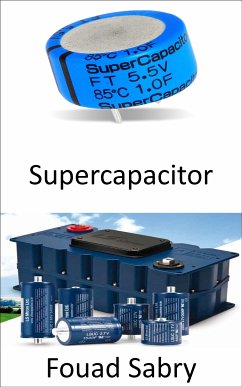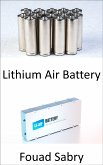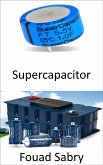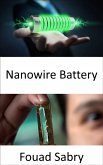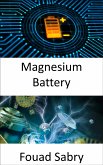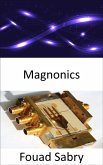What Is Supercapacitor
A supercapacitor (SC), also known as an ultracapacitor, is a high-capacity capacitor that bridges the gap between electrolytic capacitors and rechargeable batteries. It has a capacitance value that is significantly higher than that of other capacitors, but it has lower voltage limits than other capacitors. It is able to absorb and give charge considerably more quickly than batteries, and it can endure many more charge and discharge cycles than rechargeable batteries. In general, it stores 10 to 100 times more energy per unit volume or mass than electrolytic capacitors.
How You Will Benefit
(I) Insights, and validations about the following topics:
Chapter 1: Supercapacitor
Chapter 2: Lithium-ion battery
Chapter 3: Rechargeable battery
Chapter 4: Zinc-air battery
Chapter 5: Capacitor types
Chapter 6: Flow battery
Chapter 7: Capacitor
Chapter 8: Nanobatteries
Chapter 9: Nanodot
Chapter 10: Paper battery
Chapter 11: Double layer (surface science)
Chapter 12: Lithium-ion capacitor
Chapter 13: Nanoball batteries
Chapter 14: Lithium-air battery
Chapter 15: Carbide-derived carbon
Chapter 16: Pseudocapacitor
Chapter 17: Zinc-cerium battery
Chapter 18: Aluminium-ion battery
Chapter 19: Pseudocapacitance
Chapter 20: Double-layer capacitance
Chapter 21: Research in lithium-ion batteries
(II) Answering the public top questions about supercapacitor.
(III) Real world examples for the usage of supercapacitor in many fields.
(IV) 17 appendices to explain, briefly, 266 emerging technologies in each industry to have 360-degree full understanding of supercapacitor' technologies.
Who This Book Is For
Professionals, undergraduate and graduate students, enthusiasts, hobbyists, and those who want to go beyond basic knowledge or information for any kind of supercapacitor.
A supercapacitor (SC), also known as an ultracapacitor, is a high-capacity capacitor that bridges the gap between electrolytic capacitors and rechargeable batteries. It has a capacitance value that is significantly higher than that of other capacitors, but it has lower voltage limits than other capacitors. It is able to absorb and give charge considerably more quickly than batteries, and it can endure many more charge and discharge cycles than rechargeable batteries. In general, it stores 10 to 100 times more energy per unit volume or mass than electrolytic capacitors.
How You Will Benefit
(I) Insights, and validations about the following topics:
Chapter 1: Supercapacitor
Chapter 2: Lithium-ion battery
Chapter 3: Rechargeable battery
Chapter 4: Zinc-air battery
Chapter 5: Capacitor types
Chapter 6: Flow battery
Chapter 7: Capacitor
Chapter 8: Nanobatteries
Chapter 9: Nanodot
Chapter 10: Paper battery
Chapter 11: Double layer (surface science)
Chapter 12: Lithium-ion capacitor
Chapter 13: Nanoball batteries
Chapter 14: Lithium-air battery
Chapter 15: Carbide-derived carbon
Chapter 16: Pseudocapacitor
Chapter 17: Zinc-cerium battery
Chapter 18: Aluminium-ion battery
Chapter 19: Pseudocapacitance
Chapter 20: Double-layer capacitance
Chapter 21: Research in lithium-ion batteries
(II) Answering the public top questions about supercapacitor.
(III) Real world examples for the usage of supercapacitor in many fields.
(IV) 17 appendices to explain, briefly, 266 emerging technologies in each industry to have 360-degree full understanding of supercapacitor' technologies.
Who This Book Is For
Professionals, undergraduate and graduate students, enthusiasts, hobbyists, and those who want to go beyond basic knowledge or information for any kind of supercapacitor.
Dieser Download kann aus rechtlichen Gründen nur mit Rechnungsadresse in A, B, BG, CY, CZ, D, DK, EW, E, FIN, F, GR, H, IRL, I, LT, L, LR, M, NL, PL, P, R, S, SLO, SK ausgeliefert werden.

